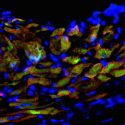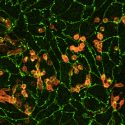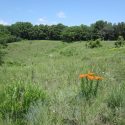Regeneration pioneer to join Morgridge Institute, UW-Madison faculty
Phil Newmark, a developmental biologist studying the mysteries of how the body regenerates damaged tissue, will join the Morgridge Institute for Research and the University of Wisconsin–Madison Department of Zoology in fall 2016.
Newmark, currently a professor at the University of Illinois at Urbana-Champaign, studies a freshwater flatworm called a planarian, a remarkable creature capable of regenerating its entire body from scratch. The model organism offers a way to better understand stem cell-driven regeneration processes, an important step in regenerative medicine and the promise of therapies to repair or replace damaged human tissue.
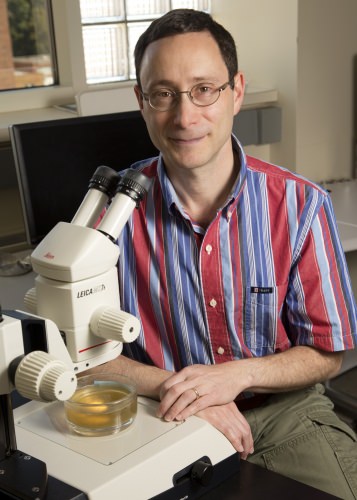
Phil Newmark
Newmark also is an investigator with the Howard Hughes Medical Institute (HHMI), a group of about 300 U.S. scientists who are pushing the boundaries of biomedical research. Newmark’s hiring will bring to five the number of HHMI investigators at UW–Madison.
“We are excited to welcome Professor Newmark to Wisconsin,” says UW–Madison Chancellor Rebecca Blank. “Our stem cell and regenerative medicine portfolio is one of UW’s strengths, and adding someone of his caliber will help us continue to stay on the front end of innovation in this field. The kind of basic research performed by Professor Newmark is how we come to understand and replicate what occurs in nature, something that holds enormous promise for treating and preventing a wide range of serious diseases and disorders in people.”
When Newmark began studying planarians in the mid-1990s, only a handful of labs around the world still used them. But Newmark’s curiosity led him to a fellowship with a planarian research group at the University of Barcelona in Spain. After that experience, Newmark was hooked. He brought a thermos full of the creatures, collected from a fountain pool in the city, back to the states to form his own colony.
“I remember planarians back from the days of my freshman biology class, when I thought they were the coolest things ever,” he says. “Their stem cells respond to various injuries and somehow are told that when a head or tail is missing, make a new head or a new tail. They really are just amazing.”
Planarians are an ideal model for determining why some organisms are capable of regenerating lost body parts, Newmark says, because of both their simplicity and the rapid rate at which they regenerate. This ability is driven by a population of stem cells that is maintained throughout their lives.
Beyond fundamental questions, Newmark’s work has immediate implications for a tropical disease called schistosomiasis, which is second only to malaria in scope and kills more than 200,000 people per year. It turns out the parasitic worms that cause this disease share a lot of biology with planarians, and Newmark’s lab has identified many new avenues for fighting the parasite.
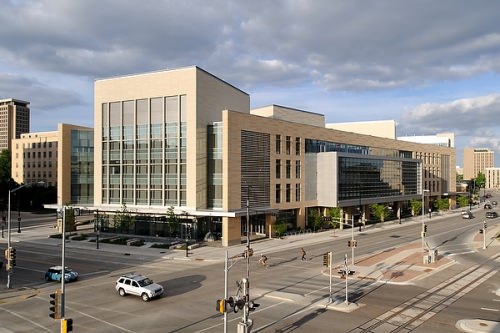
The Morgridge Institute for Research is located in the Discovery Building on the UW–Madison campus. Photo: Jeff Miller
“Schistosomiasis is one of a whole group of neglected diseases that are essentially diseases of poverty,” he says. “Many result from not having access to clean drinking water or clean water in general. The number of people affected by these diseases is really staggering.”
After observing important similarities between planarians and their disease-causing cousins, Newmark and former postdoctoral fellow Jim Collins (now a professor at UT Southwestern) took the radical step of applying their knowledge of planarians to studying schistosome biology.
Such knowledge is critical for developing new ways of targeting the parasite and reducing the disease burden. Newmark credits the flexibility of HHMI support, “which gave us the freedom to follow our ideas and pursue a completely new area of research on an organism with which we had no previous expertise. This change in direction would have been nearly impossible in the current funding climate.”
Newmark had a thorough introduction to Morgridge and UW–Madison as a member of the Morgridge Scientific Advisory Board from 2013 to 2015. Several Morgridge research areas, especially the regenerative biology team led by stem cell pioneer James Thomson, have strong parallels to Newmark’s work. Newmark will be part of the regenerative biology team.
“Serving on the advisory board primed me for jumping on board, given the caliber of people there,” he says. “At this time very few places in the country are strongly articulating the importance of basic science, and the Morgridge Institute is one of those places.”
“His work is an excellent example of the value of basic research. By using scientifically rigorous approaches to discover new knowledge, his work reveals benefits that we never would have predicted.”
Brad Schwartz
“We are thrilled to have Phil join us,” says Morgridge CEO Brad Schwartz. “He is an outstanding scientist whose collegiality and commitment to the highest ideals of a public research university make him a great fit for the UW–Madison community. His work is an excellent example of the value of basic research. By using scientifically rigorous approaches to discover new knowledge, his work reveals benefits that we never would have predicted.”
Newmark’s UW appointment will be in the Department of Zoology, in the College of Letters & Science. Jeff Hardin, Chair of Zoology, says, “Phil embodies that rare combination that makes biology at UW–Madison great: a passion for understanding how the world works, but equal passion for communicating the excitement of discovery and for how basic science can make a real difference in the world. We are delighted that he is coming to campus.”
Newmark says he is looking forward to the dual-appointment nature of his role in Madison. He intends to bring a team of about 10 researchers to campus.
“It really is the best of both worlds,” he says. “You have a private institute that offers flexibility, gives scientists the freedom to ask new research questions, and encourages risk taking. I’m also a huge believer in the mission of our great public research universities, and teaching and training undergraduates is very important to me.”
Other UW–Madison HHMI investigators include Paul Ahlquist, plant pathology and Morgridge investigator; Sean Carroll, genetics; Edwin Chapman, neuroscience; and Judith Kimble, biochemistry.
Tags: faculty, stem cells, zoology

